An art deco house was designed in 1935 to capture panoramic views across Dublin Bay from its setting high on Howth Head. And although the house has now been divided into two semi-detached homes, Windgate and Seascape, none of its views have been compromised. Balconies outside Seascape look uninterruptedly across the sea to Dalkey Island and beyond that, to Bray Head and the Wicklow hills.
The architect who designed Windgate – the home’s original name – was Toby Millar, who succeeded his father as architect for the Bank of Ireland. He built the house for himself and his family just two years before Michael Scott built Geragh, a similar – and far more familiar – white, curved art deco house across Dublin Bay in Sandycove.
Seascape last came on the market in 2013 when it was still one house called Windgate on 1.4 acres. The 450sq m (4,850sq ft) seven-bed, with a price tag of €4 million, didn't sell. The owner then decided to split the house, moving into one of the two semis (originally an extension to Windgate built in the 1980s) herself. Her house is still named Windgate – and Seascape, a 320sq m (3,445sq ft) five-bed semi on 0.61 acres – is now for sale for €1.7 million through Sherry FitzGerald.
0 of 3
Seascape is a fine art deco house with curved walls and clean lines, and comes with a self-contained granny flat, separate one-bed chalet and a wendy house near the driveway entrance. Its many windows maximise the home’s views, and have been double-glazed in recent years.
New owners will likely want to update the interiors, for example, the kitchen and bathrooms. The property needs work, especially outside: the entrance driveway and patio areas around the side and back are rather neglected. And then there’s the huge garden sloping downhill, a tangle of trees, furze, heather and plants growing wild all the way down to a stand of pine trees. It has a great deal of potential – but any changes would be subject to planning permission as this part of Howth is covered by a Special Amenity Order. (That said, there is construction work currently under way on a neighbouring house.)
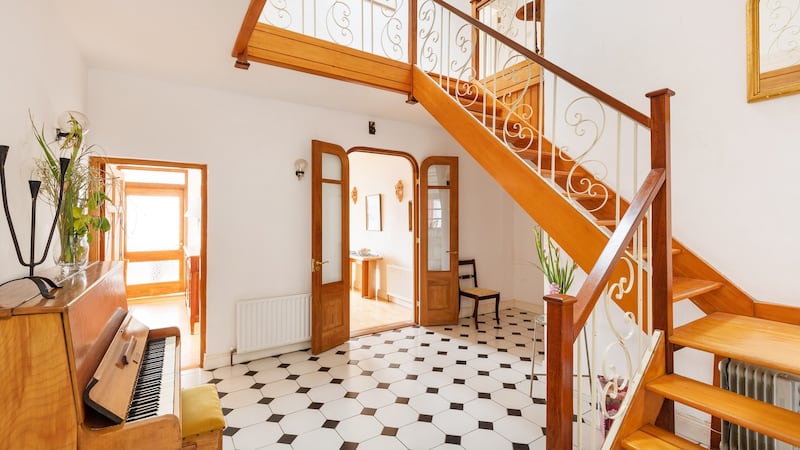
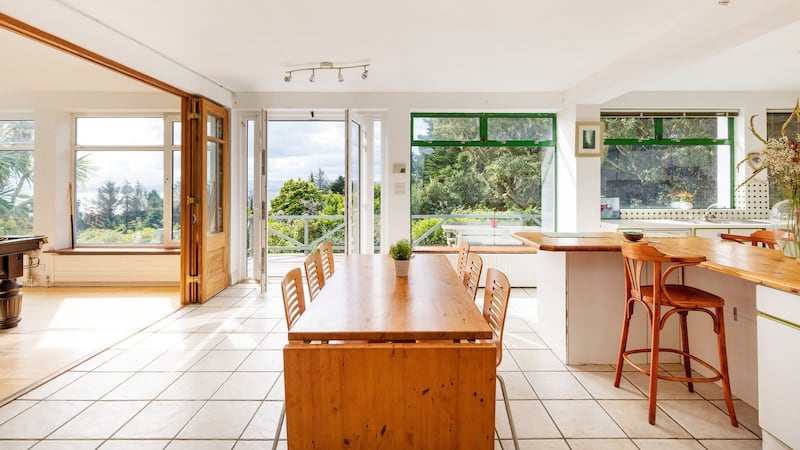
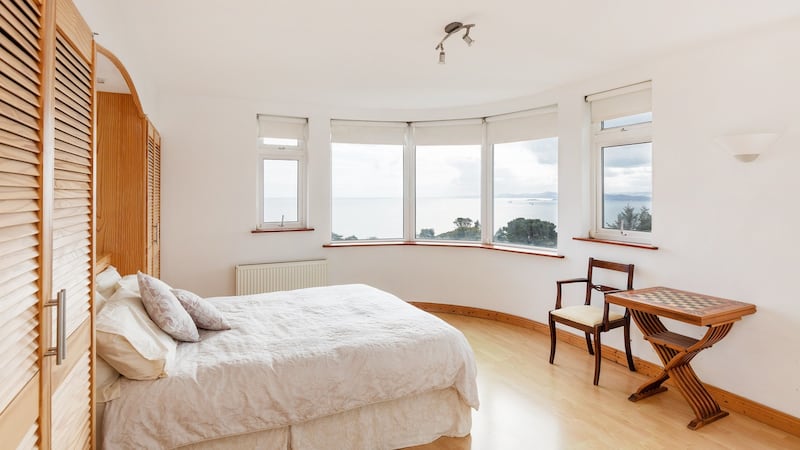
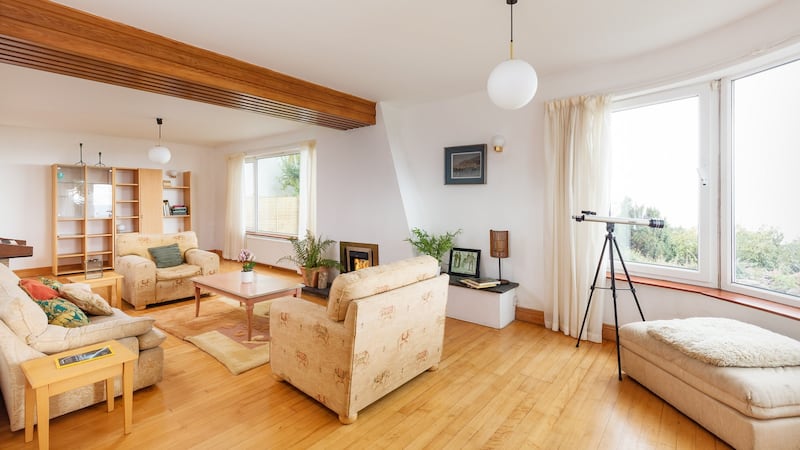
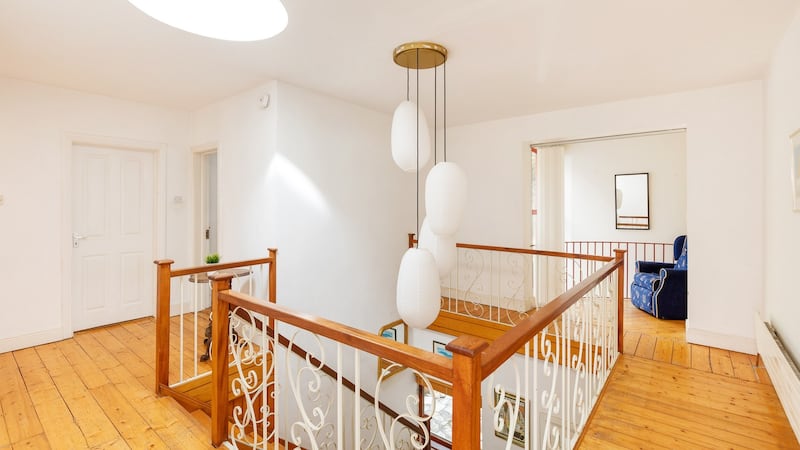
Downstairs accommodation in the house includes a long timber-floored living room with an open fireplace, a polished timber roof beam and curved windows taking in the panoramic views of Dublin Bay. The kitchen/dining room is floored with white tiles and has more large windows taking in the views.
One set of double doors from here opens onto the balcony, another into a games room big enough for a large pool table – and from here, more double doors open out to a patio.
The kitchen has a utility room off it, along with access to the self-contained one-bedroom granny flat, which itself has separate outdoor access. There are two more reception rooms downstairs, one of which could be the fifth bedroom.
The double height entrance hall has a black-and-white tiled floor and an open tread timber staircase with a wrought iron banister. Four double bedrooms, three of them en suite, open off the upstairs landing, made bright by a circular skylight over the stairs.
The main bedroom has the same curved windows as the reception room below with views over the top of the Baily lighthouse to the sea. Another bedroom has a shower unit in a corner of the room – and a locked door that would have led into the other house, now of course blocked up.












